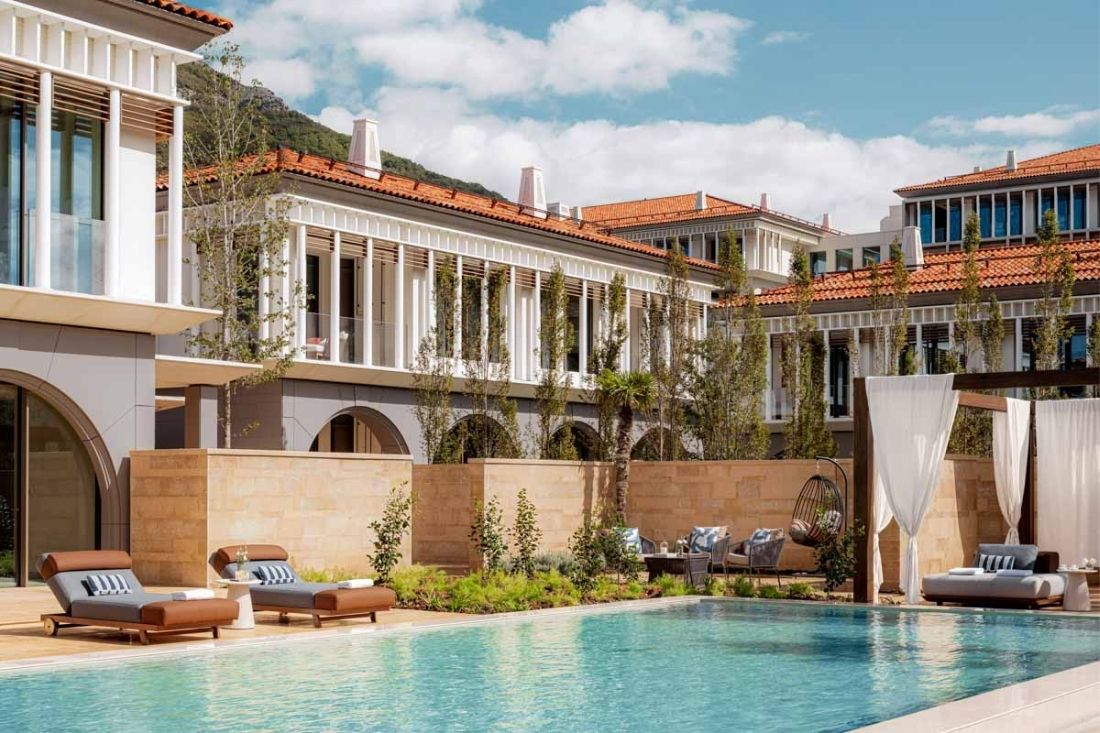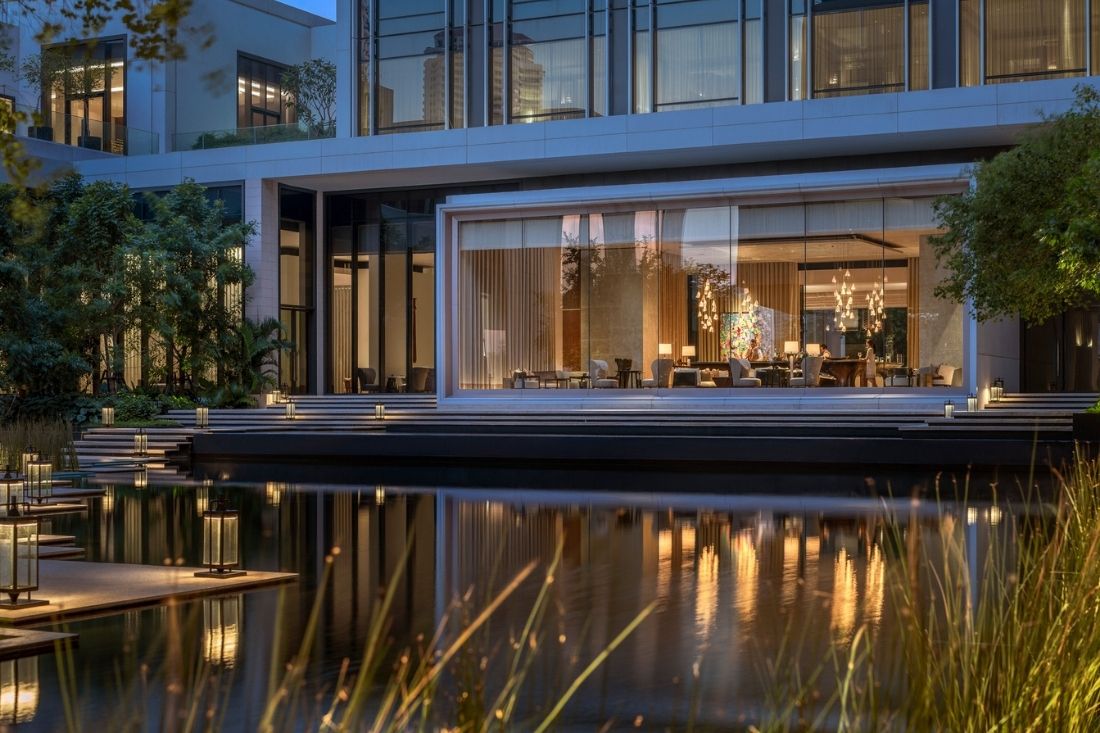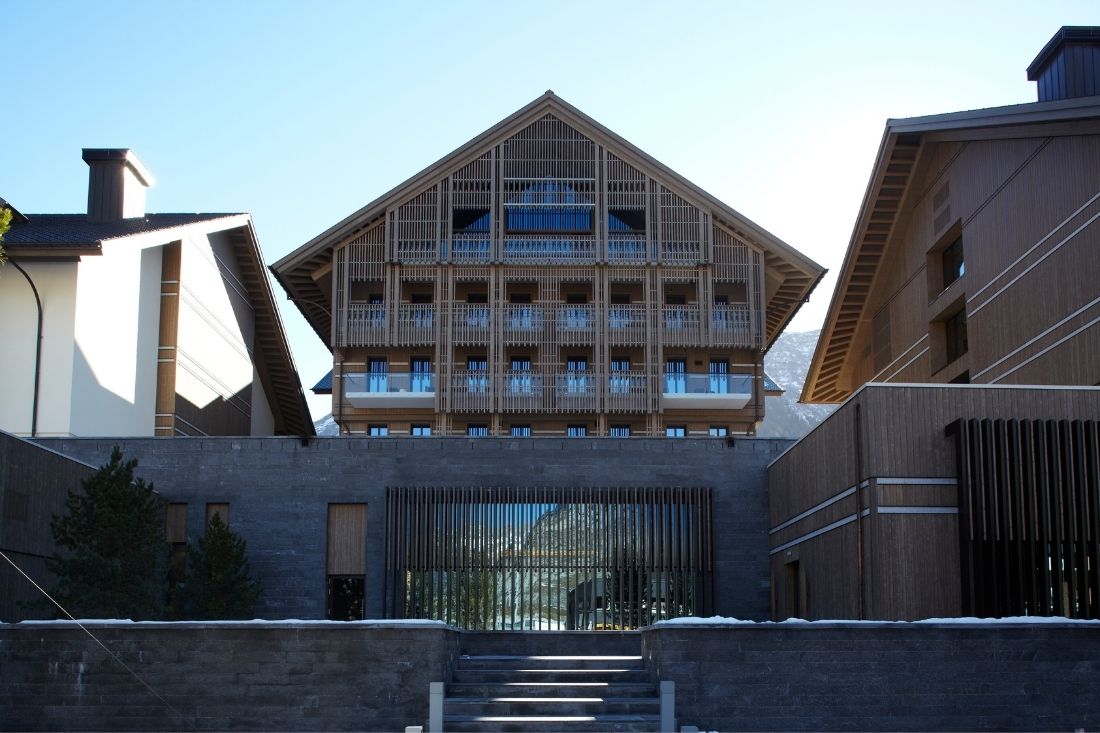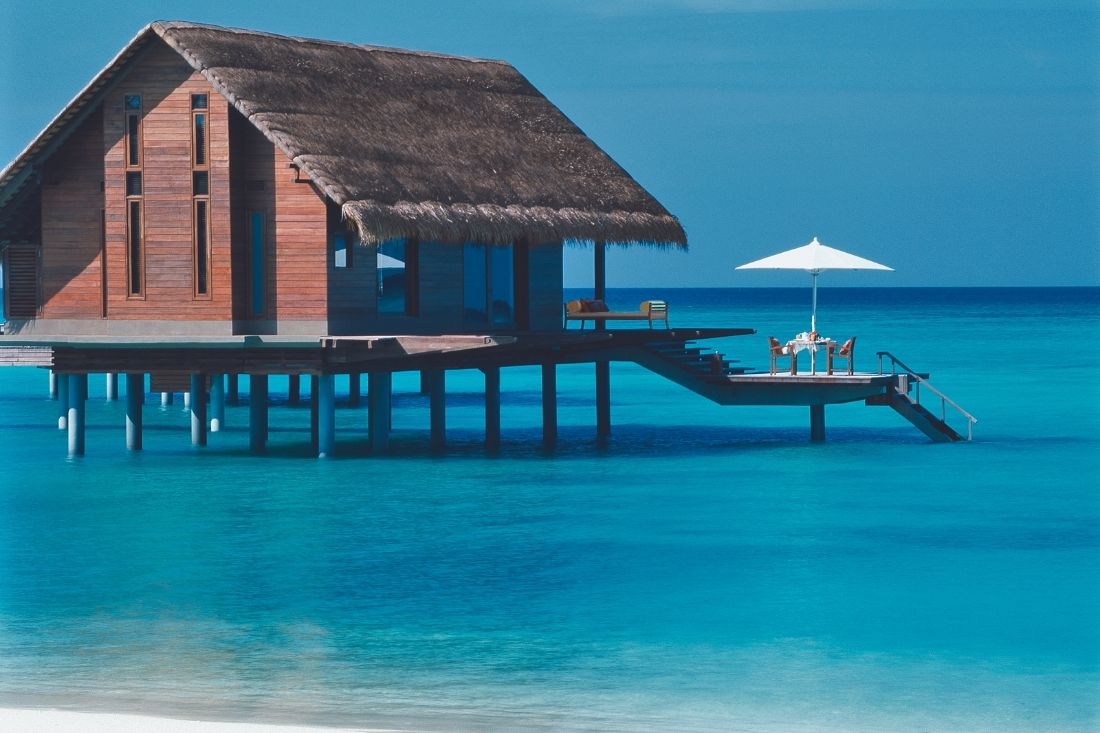Talking with Jean-Michel Gathy, we have the opportunity to delve deep into the mind and explore the practice of one of the world’s foremost designers.

September 13th, 2021
The Inde.Awards 2021 showcases the very best in creativity and also recognise those who have contributed to the architecture and design community throughout their lives. The Luminary is one such category that seeks to celebrate practitioners who, through their talent, shape the language of design in their sphere of influence.
This year there are three nominations for The Luminary, Andre Fu, Penelope Forlano and Jean-Michel Gathy – all exceptional practitioners, acknowledged in the countries in which they work but also revered around the globe.
As supporter of The Luminary, Wilkhahn knows what it takes to be the best, designing and manufacturing for a world-wide market for some 115 years. As a leader, Wilkhahn has set the agenda for producing products for commercial projects, working with architects and designers, to achieve superior outcomes for every commission. It is this understanding of quality, design, detail and customer service that sets Wilkhahn aside from its peers. As such, these qualities also apply to each of the entrants in The Luminary – where being the best is a given.

One&Only Portnovi, Designed by Denniston
Talking with Jean-Michel Gathy, we have the opportunity to delve deep into the mind and explore the practice of a great designer who has dedicated his professional life to producing outstanding projects. Working primarily within the hospitality sector, his practice DENNISTON based in Malaysia, is renowned for style and substance working for virtually every major global hospitality brand for some 40 years. Here are some of his thoughts.
WILKHAHN: How does design and product help to encourage people to visit and interact with buildings and spaces?
JEAN-MICHEL GATHY: In buildings or hotels, people are attracted by what they see, such as volume, shape, design and/or material. Not everyone is attracted by the same element, of course.
When the attraction is there, they want to get closer and more personal, to interact with it. The same way you instinctively crave to be at the river’s edge when you are near the river, to get a better feel. It is automatic, whether emotional or physical. When a place or product is well put together, you will admire it, you will have a reaction. The mind is drawn to beauty, no matter what defines one’s perception of beauty.
How can you adapt or change design to facilitate certain emotional reactions, whether that be interaction, learning, relaxation, enjoyment or other reactions?
As a designer, you try to create experiences with volume, products, materials or colours, which are pleasant to the eye. It is part of our brain’s natural processes to be engaged in visual symmetry processing – a field of study that psychologists and neurological experts have been researching. In other words, we gravitate to geometrically balanced visuals which will instinctively seem more attractive.
When you enter a luxury hotel, for example, you are immediately engaged by the lobby. The architects or designers have tailored their design to create that reaction in you.
Let’s say you arrive in a warm country; you will crave for high ceilings because that feels more refreshing. When you go up into the mountains and arrive in a chalet, you want a low ceiling to warm you with that cosiness. Designers adapt their designs to encourage these emotions in the guests.
Sometimes it is not only about being visual, but also emotionally energising. To create all these feelings, the designers also use materials, patterns or decorative items, besides space and volumes.

Four Seasons Hotel Bangkok, Designed by Denniston
How can an approach to design help to convey what a business or space is about?
The design of a space has a specific target. You design to impress, advertise, create a sense of calm, or evoke a feeling. Especially lobbies, bedrooms and restaurants. When we designed Aman New York, we were very excited because we had to blend the Aman DNA in the New York business energy. That was the target.
What role does design have in creating and fostering well-being? How do you approach this?
The word that matters the most for me, as it relates to designing for the hospitality industry is ‘comfort’. I have a very simple logic. The most comfortable place on earth is home. As the saying goes, “the best cook is my mother”. That is nonsense, of course, because everyone’s best cook in the world is their mother. She means ‘home’, the place where you feel most comfortable. Likewise, hotels need to feel like home, and by extension, a place where you feel comfortable. Once the guest is comfortable, only then will he be able to properly unwind and rest.
The colour schemes, the ergonomics of the furniture and furnishings, the materials and the lighting, all play a part in creating a comfortable ambience. Colours are very important in design and can also send a powerful message of comfort to you.

The Chedi Andermatt, Designed by Denniston
How important is the value of ‘craftsmanship’ to your work?
Very much! I am someone who believes in art. To me, craft and art are the same thing – they come from the heart. In a hotel, there are many opportunities to use craft and art, and because of your state of mind when in a hotel, the experiences become almost tactile, or at least interactive.
I am talking about the artists and craftsmen, who create art with their bare hands. Be it a furniture designer, rattan weaver or painter, craftsmen create according to their emotions and feelings. When you introduce an element of that to an environment, it softens the surroundings and contributes to emotional comfort. A true craftsman creates from a deeply emotional place and that contributes to the comfort.
How does approach to a project change depending on the country and/or industry?
I am going to share a simple analogy. If I lived in the Amazon in the middle of the jungle, what car should I buy? A Jeep! If I lived near a highway in Rome, what do I buy? A Ferrari!
Our design depends on the destination. For example, India loves pink! In Germany, you see hues of blue, whilst in Italy, the colours you tend to see added as design elements are yellow or red.
If you are designing in Britain, for example, you will ensure that it appeals to the British. If you go to Japan, you will emphasise on horizontality or feelings of Zen. Every country and its people have their specificity. The same goes for design.
You have to adapt to your environment, for example, a beach, city or mountain. If I design something in Switzerland in the mountains, as I did for The Chedi Andermatt, it would certainly not look like you were visiting a beach in Italy. You need a fireplace and some wood and create feelings of cosiness and comfort.
We call that “a sense of place”. What guides a designer is that need for a sense of place. People want to feel that they are actually in Paris, New York or Tokyo. The sense of place is part of their comfort.

One&Only Reethi Rah, Designed by Denniston
Excellent advise and thought provoking insight from Jean-Michel Gathy. His ideas of design speak of people and place that combines to produce fine projects for comfort and wellbeing. It takes one to know one, and Wilkhahn reflects all the sentiments that Gathy expresses, ensuring comfort and a people-centric approach is at the centre of its offering.
A searchable and comprehensive guide for specifying leading products and their suppliers
Keep up to date with the latest and greatest from our industry BFF's!

Suitable for applications ranging from schools and retail outlets to computer rooms and X-ray suites, Palettone comes in two varieties and a choice of more than fifty colours.

Sub-Zero and Wolf’s prestigious Kitchen Design Contest (KDC) has celebrated the very best in kitchen innovation and aesthetics for three decades now. Recognising premier kitchen design professionals from around the globe, the KDC facilitates innovation, style and functionality that pushes boundaries.

Marylou Cafaro’s first trendjournal sparked a powerful, decades-long movement in joinery designs and finishes which eventually saw Australian design develop its independence and characteristic style. Now, polytec offers all-new insights into the future of Australian design.

We spoke with Tilt’s Managing and Creative Director about industrial design, innovative technology and wellbeing within education spaces.

Strategic partner to the INDE.Awards, the Image Makers Association Australia presents a curated offering from its I SHOT 23 exhibition at Craftworks and it’s guaranteed to be a thought-provoking feast for the eye.
The internet never sleeps! Here's the stuff you might have missed

Drawing on the concept of a watering hole as a gathering place in nature, GroupGSA has rejuvenated Sydney Water’s headquarters located in Parramatta.

Artificial intelligence is one of the defining issues of our time. Here are five ideas articles addressing the anxieties and possibilities of the technology in design.